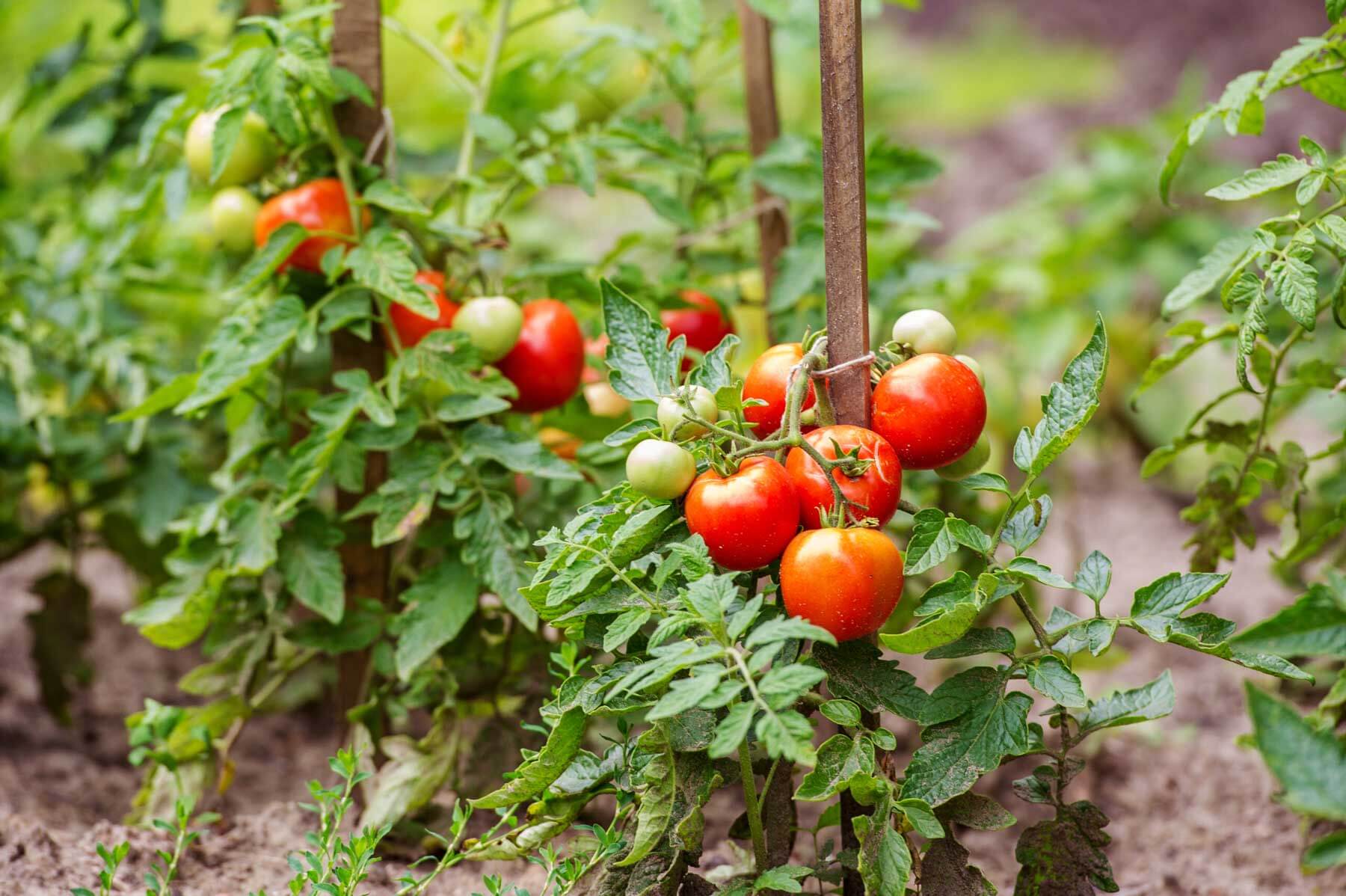Tomatoes are one of the most rewarding crops for home gardeners. If you know the right tricks, you can speed up their growth and get a big harvest sooner than you may have thought possible. Whether it is in a backyard garden or a small balcony, these tips will help you get fast growth and abundant yields.

1. Choose the Right Variety
The first step to a speedy and efficient harvest is selecting the right variety of tomato. Varieties differ in days to maturity and ripening. For quick results, consider planting the following:
Cherry tomatoes: These small, sweet tomatoes can mature in as little as 50 to 60 days.
Early-ripening varieties: Look for varieties like ‘Early Girl’ or ‘Jetsetter,’ which produce fruit in under 70 days.
Determinate tomatoes: These varieties grow to a set height and produce fruit all at once, speeding up the harvest process.
2. Start with Healthy Seedlings
Starting with robust seedlings instead of seeds can shave weeks off your growing time. When purchasing seedlings, look for:
Healthy, green leaves without any discoloration or spots.
A strong, thick stem, indicating the plant’s overall vigor.
No signs of pests or diseases.

3. Plant in Optimal Conditions
Tomatoes are warm-season plants and prefer nutrient-rich soil. To assure quick growth, perform the following:
Soil Preparation: Well-draining soil with organic matter added such as compost or aged manure is best. Tomatoes prefer slightly acidic soil with a pH between 6.0 and 6.8.
Temperature: Only plant when the soil temperature has reached above 60°F (15°C). If necessary, preheat the soil with black plastic mulch.
Sunlight: Tomatoes need at least 6 to 8 hours of direct sunlight every day for rapid growth and fruit production.
4. Proper Spacing and Support
Crowded plants can lead to slow growth and increased susceptibility to diseases. Space your tomato plants 18 to 24 inches apart and use stakes, cages, or trellises to keep the plants upright. Proper support allows better air circulation and reduces the risk of fungal infections, promoting faster growth.

5. Feed Your Tomatoes Regularly
Tomatoes are heavy feeders and need regular nutrition to support quick growth and ample fruiting. Here’s how to fertilize them:
Apply a Balanced Fertilizer: During the early stage of growth, apply fertilizer that contains a balanced dose of nitrogen, phosphorus, and potassium.
Increase Phosphorus: Once flowering begins, change to a fertilizer with higher phosphorus content for healthy roots and a bounty of blossoms.
Supplement with Compost Tea: Compost tea should be applied every 2 to 3 weeks for necessary micronutrients that help in soil health.

6. Water Effectively
Adequate watering is necessary for quick growth in tomatoes. Overwatering or irregular watering causes stunted growth and blossom-end rot, among other problems. Here’s how to water your plants effectively:
Even Moisture: Keep the soil consistently moist but never soggy. Water deeply 2 to 3 times a week, depending on weather conditions.
Mulching: Place organic mulch around the plants to retain moisture and regulate soil temperature.
Water in Morning: Water during the morning so that foliage dries out before evening, reducing fungal diseases.
7. Prune for Faster Growth
Pruning diverts energy from the plant’s putting too much into foliage production to fruiting. Make sure to:
Remove Suckers: Pinch out the small shoots, suckers, that grow in the area between the stem and branches.
Prune Lower Leaves: Take away the bottom leaves that normally touch the soil to reduce its vulnerability to disease.
Avoid Over-Pruning: As helpful as it can be, too much pruning can stress the plants and reduce yields.
8. Protect Against Pests and Diseases
Pests and diseases can slow down growth and compromise your harvest. Take proactive measures to avoid such problems:
Regular Inspect: Check plants for signs of pests like aphids, whiteflies, or caterpillars.
Organic Control: Neem oil or insecticidal soap can be used on pest infestations.
Disease-Resistant Varieties: Choose tomato varieties bred for resistance to common diseases like blight and wilt.
Crop Rotation: Tomatoes should not be grown in the same place every year to avoid soil-borne diseases.
9. Methods of Pollination
Pollination enhances fruit set and accelerates harvest. Tomatoes are self-pollinating; however, you can enhance the process by:
Gently shaking the plants to distribute pollen.
Attracting pollinators like bees by planting companion flowers such as marigolds or lavender nearby.
Using a small brush to manually transfer pollen between flowers.
10. Regular Harvest
Frequent harvests will keep the plant producing more fruit. Pick tomatoes when they reach their full color and are slightly soft to the touch. It is best not to allow ripe fruit to remain on the plant, which would slow the production of new tomatoes.
Bonus Tip: Companion Planting
Growing tomatoes with compatible plants can enhance their growth and productivity while offering some protection from insects. Good companions to plant with tomatoes include the following:
Basil: Flavorous and repels aphids and other pests.
Marigolds: Keep off nematodes and insects.
Garlic and Onions: Keep spider mites away.
Conclusion
Growing tomatoes quickly to get big harvests at home is about making the right environment, following the regular care routine, and using your head. From choosing the right varieties, optimizing the soil to correct watering and feeding schedules, here’s how you can grow a thriving tomato garden. This page ensures that both novice and confident gardeners alike get the freshest, most succulent tomatoes in the quickest possible time. Now, roll up those sleeves, start planting, and enjoy your homegrown success!







